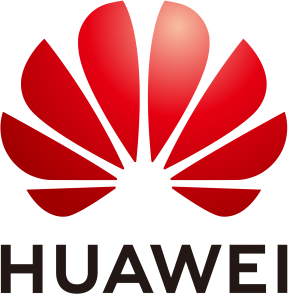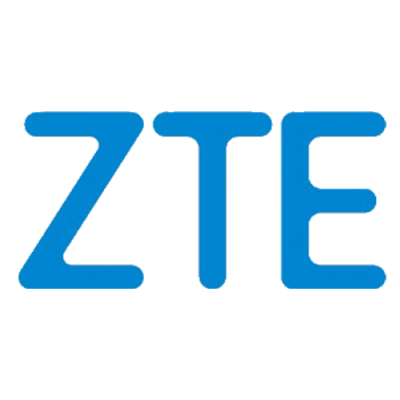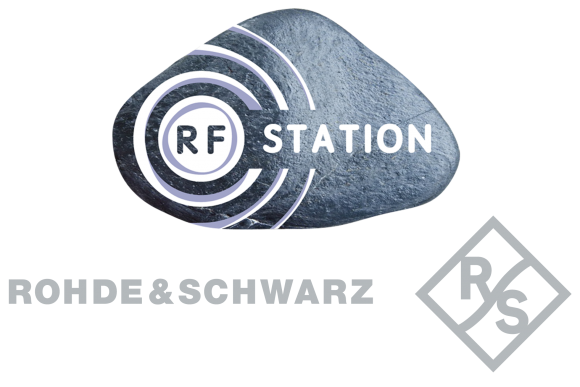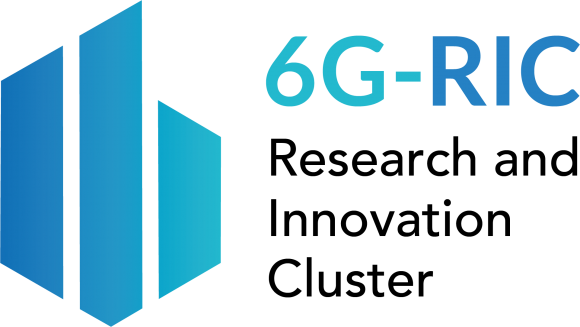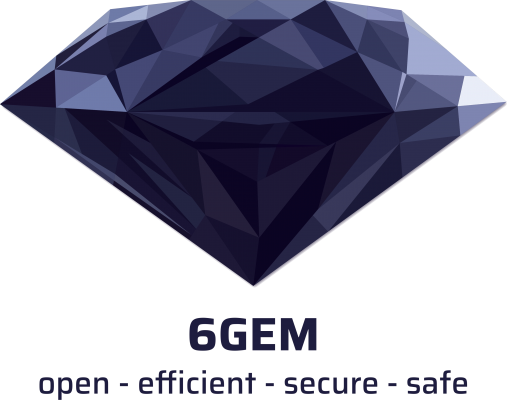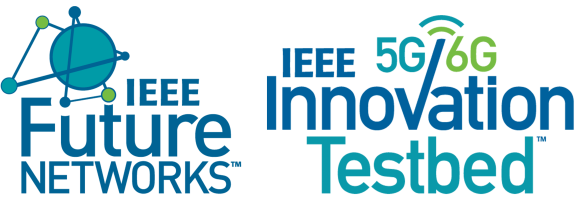- PP1: ZTE Research Highlights for 5G-Advanced and 6G
- PP2: Challenges and Opportunities of Implementing 6G Wireless Technologies in Real-World Scenarios
- PP3: Accelerate R & D in 5G using NetSim
- PP4: Technology Advancement Towards 6G: Taking the 6G-RIC Perspective
- PP5: Channel Modeling and Measurements for 6G in the Sub-THz and FR3 Frequency Range
- PP6: Recent Progress in Optical Fiber Radiation Dosimetry
PP1: ZTE Research Highlights for 5G-Advanced and 6G
TUESDAY, DEC 5, 10:05 - 10:20 / LOCATION: PODIUM SPACE EXHIBITION HALL (GRAND BALLROOM)
Panelist:
Ruiqi (Richie) Liu, ZTE
Abstract:
The podium pitch is intended to provide a platform for the conference sponsors to showcase their latest progresses in research, helping them to build their band as well as helping to draw attention from the audience. In this regard, our pitch will be a summary of our latest research highlights, especially on RIS and ISAC, along with others, to deliver the industrial view on some of the trendy technologies. We hope the content will be of interest to the conference participants.
We will demonstrate latest research findings on some hot physical layer technologies, such as RIS, as well as some novel network designs, such as ISAC. We will introduce our research work by highlighting some results from papers, and most importantly, we will demonstrate our prototypes and field trial results. For instance, we will demonstrate the latest dynamic RIS prototype from ZTE, which represents the highest level of RIS prototyping towards industrialization. We will also present some field trial results related to ISAC, full duplex, etc, to showcase the industrial progresses towards 5G-advanced and 6G.
 Speaker:
Speaker:
Ruiqi (Richie) Liu (S'14-M'20) received the B.S. and M.S. degree (with honors) in electronic engineering from the Department of Electronic Engineering, Tsinghua University in 2016 and 2019 respectively. He is now a master researcher in the wireless and computing research institute of ZTE Corporation, responsible for long-term research as well as standardization. His main research interests include reconfigurable intelligent surfaces, integrated sensing and communication and wireless positioning. He is the author or co-author of several books and book chapters. He has participated in national key research projects as the researcher or research lead. During his 3-year service at 3GPP from 2019 to 2022, he has authored and submitted more than 500 technical documents with over 100 of them approved, and he served as the co-rapporteur of the work item (WI) on NR RRM enhancement and the feature lead of multiple features. He currently serves as the Vice Chair of ISG RIS in the ETSI. He actively participates in organizing committees, technical sessions, tutorials, workshops, symposia and industry panels in IEEE conferences as the chair, organizer, moderator, panelist or invited speaker. He served as the Deputy Editor-in-Chief of IET Quantum Communication, the Editor of ITU Journal of Future and Evolving Technologies (ITU J-FET) and Guest Editor or Lead Guest Editor for a series of special issues. He is the Standardization Officer for IEEE ComSoc ETI on reconfigurable intelligent surfaces (ETI-RIS) and the Standards Liaison Officer for IEEE ComSoc Signal Processing and Computing for Communications Technical Committee (SPCC-TC). His recent awards include the 2022 SPCC-TC Outstanding Service Award and the Beijing Science and Technology Invention Award (Second Prize, 2022).
PP2: Challenges and Opportunities of Implementing 6G Wireless Technologies in Real-World Scenarios
TUESDAY, DEC 5, 15:35 - 15:50 / LOCATION: PODIUM SPACE EXHIBITION HALL (GRAND BALLROOM)
Panelist:
Malay Duggar, NI
Abstract:
6G research ideas are often based on theoretical models and assumptions that may not reflect the actual conditions and constraints of the real world.
By implementing 6G research ideas, we can also gain insights and feedback from the users and stakeholders, and identify the challenges and opportunities for improvement. It can also help demonstrate their potential impact and benefits for the society, and inspire further innovation and collaboration.
The research community is already exploring the possibilities of 6G, as 5G deployments are becoming more widespread and advanced. 6G will aim to achieve higher performance and enable new applications based on emerging technologies, as well as address the issues of sustainability and security. Some of the key technical areas that are being investigated for 6G are the integration of communications and sensing, the use of THz/sub-THz frequencies, the implementation of extreme MIMO, and the application of artificial intelligence/machine learning (AI/ML). These areas are complex and challenging, and require fast and efficient research and prototyping methods.
Speaker:

Malay is the Chief Offering Manager for wireless research at NI (Formerly National Instruments), where he leads the product development and market strategy for this domain. He has a deep understanding of the current and future trends in wireless technologies and how to address the challenges and needs of the customers. He is also the domain expert who guides the customers to succeed on the NI SDR platform and shapes NI’s vision and approach to support cutting edge research. He is passionate about building ecosystems that foster collaboration and innovation among researchers, industry partners, and academia. He believes that by bringing together diverse technologies, wireless research can be accelerated and transformed. Malay has a rich global experience, having worked in different locations such as Texas, California and Bangalore, India before settling in Singapore. He holds a Bachelor’s degree in Physics and Electrical Engineering from The University of Wisconsin, Madison (2005) and a Master’s degree in Electrical Engineering from Carnegie Mellon University in Pittsburgh (2009).
LinkedIn: https://www.linkedin.com/in/mduggar/
PP3: Accelerate R & D in 5G using NetSim
WEDNESDAY, DEC 6, 10:05 - 10:20 / LOCATION: PODIUM SPACE EXHIBITION HALL (GRAND BALLROOM)
Panelist:
Pranav Viswanathan, NETSIM
Abstract
Researchers lack the requisite tools for simulating end-to-end 5G networks. There are a few ‘Link-level’ simulators that enable users to model a single link between the UE and the gNB. These can’t be used for end-to-end modelling of the network, from the UE to the host-server. Furthermore, they do not allow for modelling of the entire TCP/IP protocol stack.
Open-source simulators are very complex, do not have a GUI, not easy to use, require the knowledge of various scripting & programming languages, and come with no support. Hardware testbeds that can be customized is prohibitively expensive.
NetSim solves these problems. It is an end-to-end, full stack, packet level simulator and features an easy-to-use GUI with simple drag and drop functionality. The output of the simulation is available as an appealing Results Dashboard with tables and graphs. The protocol source C codes are provided along with which can be modified by researchers to write their own algorithms/protocols.
In this technical session, our focus is on the deployment and analysis of 5G networks using NetSim's simulation environment. The demonstration will encompass the following key areas:
- 5G NR Network Architecture Configuration: Detailed walkthrough on setting up the 5G NR network within the NetSim User Interface (UI).
- Protocol Stack Configuration: RRC, RLC, MAC, PHY, RF propagation
- Output Performance Metrics: Presentation of graphical and tabular output metrics for performance analysis.
- Diagnostic Logs:
- PHY Radio measurements.
- MAC Radio resource allocation
- Trace Files:
- Packet Trace: Analysis of packet-level data flow through the network.
- Event Trace: Chronological sequence of simulation events for in-depth study.
- Custom Code Integration in NetSim:
- Guidelines for incorporating user-defined algorithms and protocols into NetSim's framework.
- MATLAB Interfacing:
- Procedures for coupling NetSim simulations with MATLAB for advanced computational tasks.
Simulation Parameters and Modelling Techniques:
- MIMO and Beamforming: Implementation and impact on network performance.
- Interference Modelling: Simulate and analyzing DL and UL interference in 5G networks.
- Propagation Models: Rural Macro/Micro, Urban Micro/Macro, Line-of-Sight (LOS)/Non-Line-of-Sight (NLOS) scenarios
- MAC Scheduling Algorithms: Analysis of different scheduling strategies and their influence on network performance.
- Heterogeneous Network Modelling: Techniques for simulating multi-tier network architectures.
- Handover Mechanism Modelling:
- Parameter configuration: Offset, Time-to-Trigger (TTT).
- Analysis of handover interruption times and their effects on user experience.
Each of these topics will be elucidated with relevant examples, highlighting NetSim's versatility in modelling complex 5G scenarios.
Speaker:
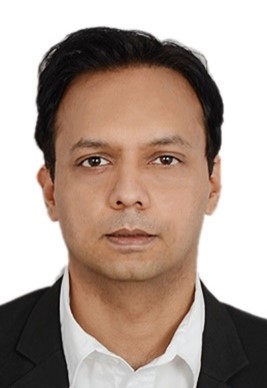
Pranav Viswanathan is the co-founder of NetSim (2005) and its chief architect. Pranav serves as the CEO and oversees R&D, Product, and Support. In the early years, he wrote the Discrete Event Simulation (DES) framework for NetSim including the simulation kernel and the performance metrics computation engine. His current focus is on the 5G library and adding a Machine Learning framework to NetSim.
Pranav has a penchant for interacting with customers, appreciating their requirements, and answering needs with software. He has 17+ years of experience in the field of network simulation and emulation, and has traveled worldwide to orchestrate solutions using NetSim.
He has authored a variety of papers, book chapters, tech articles and has given numerous talks, tutorials and seminars in the area of modelling and simulation of communication networks.
Pranav received his B-Tech from IIT Madras (’03)
PP4: Technology Advancement Towards 6G: Taking the 6G-RIC Perspective
WEDNESDAY, DEC 6, 15:35 - 15:50 / LOCATION: PODIUM SPACE EXHIBITION HALL (GRAND BALLROOM)
Panelist:
Slawomir Stanczak, 6G RIC
Abstract:
This talk will introduce the "6G Research and Innovation Cluster" (6G-RIC), which is undertaking an ambitious and comprehensive interdisciplinary research program to address the technical challenges associated with 6G. The focus will be on the following research topics: hybrid machine learning in the 6G air interface, cell-less massive MIMO networks (in the context of sub-6GHz and sub-THz communications), reconfigurable intelligent surfaces and semantic-enhanced communication.
Speaker:
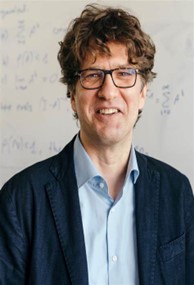
Slawomir Stanczak studied electrical engineering with specialization in control theory at the Wroclaw University of Technology and at the Technical University of Berlin (TU Berlin). He received the Dipl.-Ing. degree in 1998 and the Dr.-Ing. degree (summa cum laude) in electrical engineering in 2003, both from TU Berlin; the Habilitation degree (venialegendi) followed in 2006. Since 2015, he has been a Full Professor for network information theory with TU Berlin and the head of the Wireless Communications and Networks department at Fraunhofer Institute for Telecommunications, Heinrich Hertz Institute (HHI). Prof. Stanczak has been involved in research and development activities in wireless communications since 1997. In 2004 and 2007, he was a Visiting Professor with RWTH Aachen University and in 2008, he was a Visiting Scientist with Stanford University, Stanford, CA, USA. He is a co-author of two books and more than 200 peer-reviewed journal articles and conference papers in the area of information theory, wireless communications, signal processing and machine learning.
Prof. Stanczak received research grants from the German Research Foundation and the Best Paper Award from the German Communication Engineering Society in 2014. He was a Co-chair of the 14th International Workshop on Signal Processing Advances in Wireless Communications (SPAWC 2013). Between 2009 and 2011, he was an Associate Editor of the European Transactions for Telecommunications (information theory) and an Associate Editor of the IEEE Transactions on Signal Processing between 2012 – 2015 and the chair of the ITU-T Focus Group on Machine Learning for Future Networks including 5G from 2017 – 2020. Since 2020, Prof. Stanczak is chairman of the 5G BERLIN association and an Editor of the IEEE Journal on Selected Areas in Communications for the special issue “Machine Learning in Communications and Networks”. Since 2021 he is coordinator of the 6G Research & Innovation Cluster and the flagship project CampusOS.
PP5: Channel modeling and measurements for 6G in the sub-THz and FR3 frequency range
THURSDAY, DEC 7, 10:05 - 10:20 / LOCATION: PODIUM SPACE EXHIBITION HALL (GRAND BALLROOM)
Panelist:
Taro Eichler, Rohde & Schwarz
Abstract:
The frequency range of sub-terahertz and terahertz waves, which spans from 0.1 THz to 3 THz and falls between microwave and optical waves, holds significant potential for applications such as communication, imaging, spectroscopy, and sensing. With the ability to offer contiguous frequency bands and meet the demand for high data transfer rates of up to the terabit/sec range, this area of research is essential for 6G mobile communication. To fully utilize this potential, it is crucial to understand the propagation characteristics, and channel measurements are necessary for developing future communication standards. We will discuss the characteristics of channel modeling and propagation in this frequency range and present recent measurement campaign results in the D-band and H-band, including in industrial environments. Furthermore, we will discuss channel measurement results at 14 GHz in the so-called FR3 region, which has recently attracted interest as one of the potential bands for the initial 6G network roll-out.
Speaker:
 Taro Eichler is Technology Manager for wireless communications and photonics at Rohde & Schwarz in Munich with a focus on 5G/6G technologies. With 15 years of experience in wireless communication, he is currently working on 6G industry research projects covering THz communication, photonics and reconfigurable intelligent surfaces, also representing the company in the ETSI ISG THz. Prior to joining Rohde & Schwarz, Taro worked for Intel Corporation as specialist for photonic communication solutions and for NTT Basic Research Laboratories. He also worked on research projects at The University of Tokyo in the field of quantum optics with a scholarship by the Alexander-von-Humboldt foundation. He holds a diploma in physics from the Technical University of Munich with thesis at the Max-Planck-Institute for Quantum Optics and a Ph.D. in physics from the University of Bonn, Germany.
Taro Eichler is Technology Manager for wireless communications and photonics at Rohde & Schwarz in Munich with a focus on 5G/6G technologies. With 15 years of experience in wireless communication, he is currently working on 6G industry research projects covering THz communication, photonics and reconfigurable intelligent surfaces, also representing the company in the ETSI ISG THz. Prior to joining Rohde & Schwarz, Taro worked for Intel Corporation as specialist for photonic communication solutions and for NTT Basic Research Laboratories. He also worked on research projects at The University of Tokyo in the field of quantum optics with a scholarship by the Alexander-von-Humboldt foundation. He holds a diploma in physics from the Technical University of Munich with thesis at the Max-Planck-Institute for Quantum Optics and a Ph.D. in physics from the University of Bonn, Germany.
PP6: Recent Progress In Optical Fiber Radiation Dosimetry
THURSDAY, DEC 7, 15:35 - 15:50 / LOCATION: PODIUM SPACE EXHIBITION HALL (GRAND BALLROOM)
Speaker:
Hairul Azhar, Multimedia University, Malaysia
Abstract
Ionizing radiation in the environment, medical, industrial, and high energy accelerator facilities have adverse effects on humans and installed electronics. Monitoring radiation levels across a facility and the environment requires an accurate radiation dosimetry which is distributed in nature. Likewise, accurate measurement of absorbed dose in radiotherapy and especially FLASH-RT is becoming crucial. Specialty optical fiber has demonstrated its potential as both passive and active radiation dosimetry in such scenarios. The coupled ability of specialty optical fiber as a sensor and as a waveguide opens a new dimension of distributed and point radiation sensing that is both in-situ, real-time and high-resolution based on radioluminescence (RL) and radiation induced attenuation (RIA). In this paper, we elucidate the recent progress in optical fiber radiation dosimetry focusing on time-resolved dosimetry leading to potential FLASH-RT dosimetry. Besides this, we report earlier work on industrial radiation measurement up to 70 kGy using optical fiber scintillators. Moving on to environmental monitoring, we report on recent work related to NORM and TENORM measurements using an extendable optical fiber probe radiation measurement system. Finally, we review suitable materials used in a specialty optical fiber for real-time and distributed radiation sensing based on Radiation Induced Attenuation (RIA). The concept of a real-time distributed optical fiber radiation dosimetry sensing system is introduced, focusing on the use of photobleaching in low-OH pure silica optical fiber and RIA based measurements using the optical time domain reflectometry (OTDR) technique
Speaker:
Hairul is a professor at the Faculty of Engineering, Multimedia University, Malaysia. He is currently serving as the Vice President of Market Exploration, Engagement and Touchpoints (MEET), where he oversees the strategic planning and management of external engagements with international universities, industries and communities. He previously served as the Vice President of Research, Industrial Collaborations and Engagement (RICE). He has served MMU for over 23 years, starting off as a tutor and later serving in several capacities including Dean of Research and Director for Research Collaborations. In 2014, he was awarded ‘Top Research Scientists Malaysia’ by Academy of Sciences, Malaysia. He is passionate about making research impact and the importance of multidisciplinary research



